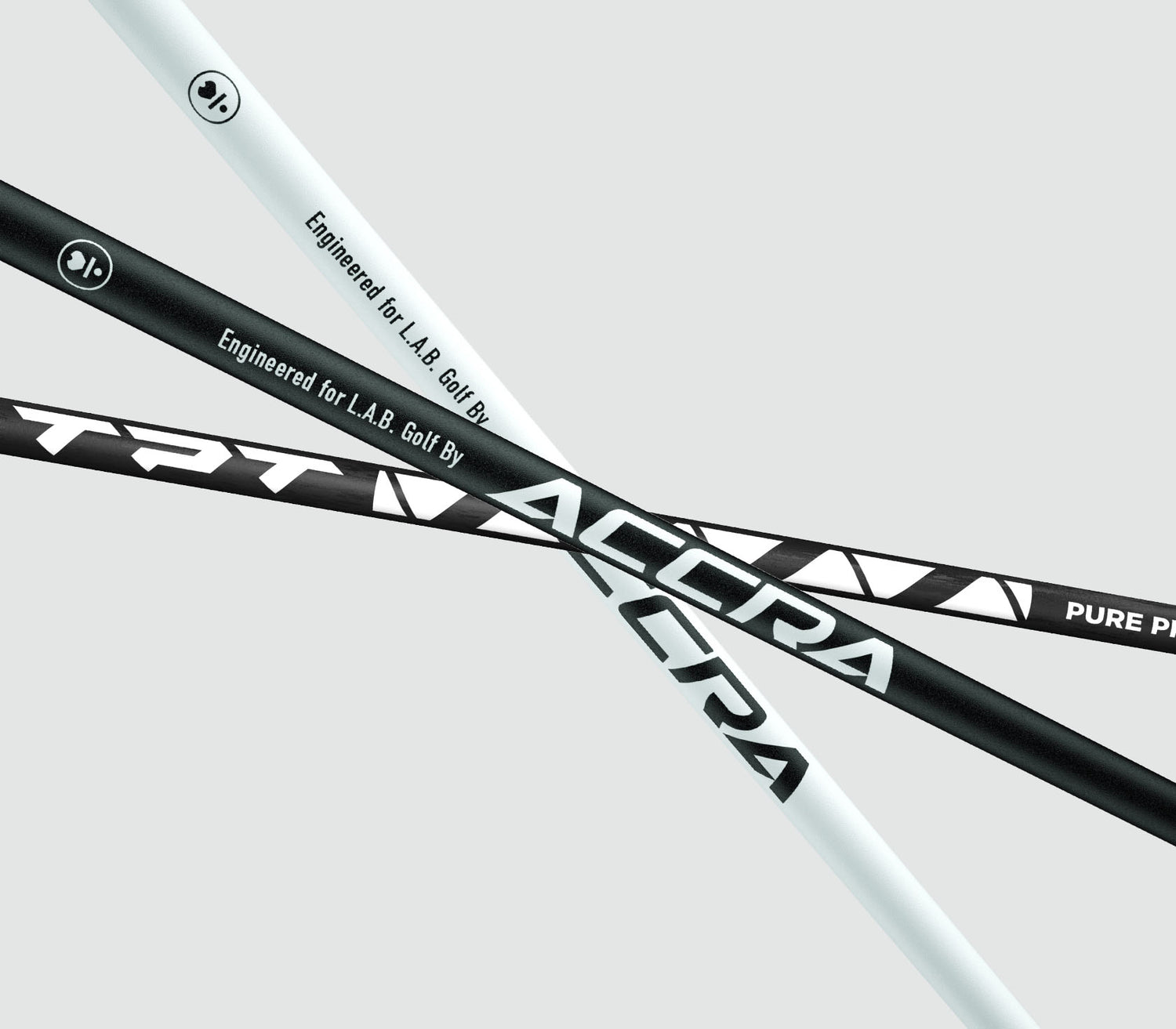EJS GOLF BLOG
Learn about the golf swing and what you can do to improve your score on the golf course. Fill out the form below if you have any questions or want to set up a time to talk.
Mastering the Art of Golf with Coach Erik Schjolberg
Welcome to my blog at EJS Golf Academy, the premier destination for mastering the art of golf. Here at our Scottsdale location, at McCormick Ranch Golf Club, every golfer who steps into my world-class teaching bay discovers a pathway to enhance their game. My name is Coach Erik Schjolberg, and I am committed to transforming your golf skills through a combination of cutting-edge technology and personalized coaching techniques.
At EJS Golf, we understand that every golfer's journey is unique. Whether you are a PGA Tour professional, a college athlete, a developing junior, or a weekend enthusiast, our blog is designed to provide you with insights and strategies to improve your game. Our posts are not just about golf; they are about becoming a better player through deliberate practice and scientific understanding of golf mechanics.
Explore Our Blogs

11. How Shaft Flex Affects Shaft Lean
Flex for Success | The Impact of Shaft Flex on Shaft Lean
As a golf coach with over 25 years of experience, I've seen firsthand how critical shaft selection is to a golfer's performance. Hi, my name is Erik Schjolberg and at my academy, EJS Golf in Scottsdale, AZ, I've helped countless players optimize their equipment, and I can tell you that understanding the nuances of golf shafts is crucial for any serious golfer. In this blog post, I'll delve deep into the technical aspects of golf shafts, exploring how different characteristics affect performance and how to choose the right shaft for your swing.

The Technical Side of Golf Shafts
When we talk about golf shafts, we're not just discussing a simple stick that connects the club head to your hands. We're talking about a precisely engineered piece of equipment that can significantly impact your ball flight, distance, and overall performance. Let's break down the key technical aspects of golf shafts:
When fitting players at my EJS Golf Academy, I consider their swing characteristics, skill level, and desired ball flight when recommending a shaft kick point. For example, a player with a fast, aggressive transition might benefit from a higher kick point for more stability, while a player with a smooth tempo and slower swing speed might perform better with a lower kick point for added launch assistance. t's important to note that kick point is just one aspect of shaft performance.
Other factors like flex, weight, and torque also play crucial roles in how a shaft performs for a given player. That's why I always recommend a professional fitting to find the optimal shaft for each individual golfer at my academy, we use advanced technology like TrackMan 4 and 3D Force Plates to analyze a player's swing and ball flight characteristics. This allows us to make data-driven recommendations for shaft selection, ensuring that each player gets the performance benefits they need from their equipment.Remember, the goal is to find a shaft that complements your natural swing and helps you achieve consistent, optimal ball flight.
Whether you're looking for Scottsdale golf lessons or online golf instruction, visit EJSGolf.com to learn how we can help you find the perfect shaft for your game and take your performance to the next level.
Kick Points and Their Impact
The kick point, also known as the flex point or bend point, is the area on the shaft where it bends the most during the swing. There are three main types of kick points:
1. Low Kick Point: Located closer to the clubhead, low kick points typically result in higher ball flight. These shafts are often beneficial for players with slower swing speeds or those looking to increase their launch angle.
2. Mid Kick Point: As the name suggests, these have a flex point in the middle of the shaft. They offer a balance between launch and control, making them suitable for a wide range of players.
3. High Kick Point: Located closer to the grip, high kick points generally produce a lower ball flight. These are often preferred by players with faster swing speeds who want to reduce spin and achieve a more penetrating trajectory.
The kick point interacts with your swing characteristics to influence the launch angle and spin rate of your shots. For example, a player with a steep angle of attack might benefit from a lower kick point to help get the ball airborne, while a player with a shallower angle of attack might prefer a higher kick point for better control.
Shaft Weight: Finding the Right Balance
Shaft weight is another crucial factor that can significantly affect your swing. Typically, shaft weights range from about 40 grams in ultra-light graphite shafts to over 130 grams in heavy steel shafts. Here's how weight can impact your game:
- Lighter Shafts (40-60 grams): These can help increase swing speed, which can lead to more distance. They're often beneficial for players with slower swing speeds or those looking to reduce fatigue during a round.
- Mid-Weight Shafts (60-90 grams): Offer a balance between speed and control. These are popular among a wide range of players.
- Heavier Shafts (90+ grams): Can provide more stability and control, often preferred by players with faster swing speeds or those who struggle with consistency.
It's important to note that while lighter shafts can increase swing speed, they're not always the best choice for every player. Some golfers actually perform better with heavier shafts, as the additional weight can help them feel the clubhead throughout the swing, leading to better tempo and consistency.
Understanding Kickback

Kickback, also known as shaft droop or vertical deflection, refers to how much the shaft bends backward (toward the target) during the downswing. This is different from the kick point, which is about where the shaft bends, while kickback is about how much it bends.
Kickback can significantly affect the dynamic loft of the club at impact, which in turn influences launch angle and spin rate. Shafts with more kickback tend to increase dynamic loft, potentially leading to higher launch and more spin. Conversely, shafts with less kickback can reduce dynamic loft, resulting in a lower launch and less spin.
The amount of kickback a shaft produces depends on several factors, including the shaft's material, design, and flex profile. It's also heavily influenced by the player's swing characteristics, particularly their transition and downswing speed.

Matching Shafts to Swing Transitions
One of the most critical aspects of shaft fitting is matching the shaft's characteristics to the player's swing transition. The transition is the moment when the backswing ends and the downswing begins. Let's look at how different transition types might pair with various shaft characteristics:
Violent Transition
Players with a violent transition move aggressively from backswing to downswing, creating a sudden change in direction. For these players, I often recommend:
- Stiffer Flex: A stiffer shaft can help resist the sudden force applied during the transition, maintaining better control and consistency.
- Higher Kick Point: This can help keep the ball flight down and reduce spin, counteracting the tendency for a violent transition to increase both.
- Heavier Weight: A heavier shaft can provide more stability through the transition, helping to smooth out the aggressive move.
- Low Torque: Less twisting in the shaft can help maintain accuracy despite the aggressive transition.
Smooth Transition
Players with a smooth transition have a more gradual change from backswing to downswing. For these players, I might suggest:
- More Flexible Shaft: This allows the player to load the shaft more effectively, potentially increasing power.
- Lower Kick Point: Can help increase launch angle and maximize distance for players who might not generate as much speed in the transition.
- Lighter Weight: Can help increase swing speed without disrupting the smooth tempo.
- Higher Torque: Can allow for more feel and feedback through the swing.
Remember, these are general guidelines. Every player is unique, and the best shaft for any individual will depend on a combination of factors including swing speed, tempo, release point, and personal preferences.
Case Study: Transforming a Driver's Performance
To illustrate the impact that the right shaft can have, let me share a recent success story from my academy. John (name changed for privacy) came to me struggling with his driver. He's a 45-year-old former college baseball player with a naturally athletic swing, but he was fighting a persistent slice and a ballooning ball flight that was costing him distance.
John's original driver setup was:
- Driver: TaylorMade Stealth Plus, 9 degrees
- Shaft: Stock Mitsubishi Tensei AV Raw White 65 S (stiff flex)
Using my TrackMan 4 launch monitor, we gathered his baseline stats:
- Club Head Speed: 105 mph
- Ball Speed: 152 mph
- Launch Angle: 15.2 degrees
- Spin Rate: 3200 rpm
- Carry Distance: 252 yards
- Total Distance: 275 yards
After analyzing John's swing, I noticed his violent transition was causing the shaft to kick forward too early, leading to an open face at impact and excessive spin. We tried several shafts and found the best performance with:
- New Shaft: Project X HZRDUS Smoke Black RDX 70 6.5 (X-Stiff flex)
This shaft has a higher kick point, lower torque, and slightly heavier weight compared to his original shaft. Here are John's new stats after the shaft change:
- Club Head Speed: 106 mph (+1 mph)
- Ball Speed: 158 mph (+6 mph)
- Launch Angle: 13.8 degrees (-1.4 degrees)
- Spin Rate: 2600 rpm (-600 rpm)
- Carry Distance: 270 yards (+18 yards)
- Total Distance: 298 yards (+23 yards)
The new shaft's characteristics helped John in several ways:
1. The stiffer flex and higher kick point helped him square the face more consistently at impact, reducing his slice tendency.
2. The lower torque provided more stability through his aggressive transition.
3. The slightly heavier weight gave John more feedback during the swing, improving his tempo.
4. The combination of these factors led to a more optimal launch angle and significantly reduced spin, resulting in the impressive distance gains.
This case study demonstrates how crucial it is to match the shaft to the player's swing characteristics. John's violent transition required a shaft that could stand up to his aggressive move into the ball, and once we found the right match, his performance improved dramatically.
Conclusion
Selecting the right golf shaft is a complex process that requires careful consideration of numerous factors. From kick points and weight to flex profiles and torque, each characteristic plays a role in how the shaft performs for a given player.
As a coach, I can't stress enough the importance of getting properly fitted for your golf shafts. While understanding these technical aspects is valuable, nothing replaces the insights gained from working with a professional fitter who can analyze your swing and test different options in real-time.
At EJS Golf Academy, we use cutting-edge technology like TrackMan 4, 3D Force Plates, and Sportsbox 3D to provide a comprehensive analysis of your swing and equipment needs. Whether you're a tour pro or a weekend warrior, optimizing your shaft selection can lead to significant improvements in your game.
Remember, golf is a journey of continuous improvement. As your swing evolves, so too might your equipment needs. Regular check-ins and fittings can ensure that your clubs are always optimized for your current swing.
If you're in the Scottsdale area and want to dive deeper into shaft technology or get a professional fitting, visit me at McCormick Ranch Golf Club or check out my website at EJSGolf.com. I offer both in-person lessons in Scottsdale and online lessons for those farther afield. Let's work together to find the perfect shafts for your game and take your performance to the next level.
What You Can Expect from Our Blog
1. Expert Insights on Swing Mechanics:
With over 25 years of experience as a PGA Professional Golf Instructor, I delve deep into the nuances of golf swing mechanics. My articles break down complex theories into understandable concepts, focusing on ground reaction forces (GRFs), biomechanics, and efficient energy transfer.
2. Advanced Technological Guidance:
Our academy is equipped with state-of-the-art tools like the Trackman 4 Launch Monitor, 3D Pressure Plates, and Hackmotion, among others. On the blog, I share how to leverage these technologies to gain precise feedback on your swing, helping you make informed adjustments and see measurable improvements.
3. Tailored Practice Routines:
My philosophy is built on the belief that improvement should be evident from the first lesson. I advocate a '15 minutes per day' practice model, designed to fit into your busy schedule while ensuring consistent progress. Each blog post aims to offer practice drills and routines that are easy to implement and effective in refining your skills.
4. Real Success Stories:
Read about the experiences of those who have trained at EJS Golf Academy. These testimonials not only inspire but also illustrate the practical application of our teaching methodologies and the real results achieved.
5. Interactive Learning:
We occasionally feature video tutorials and interactive content that allows you to visually grasp techniques and corrections. This blended approach helps reinforce learning and allows you to engage with the content actively.
How Our Blog Helps Golfers Get Better
Every post is crafted with the intent to educate. We cover everything from basic fundamentals to advanced techniques, ensuring there's something valuable for every skill level. By presenting data and evidence-backed strategies, our blog demystifies the 'why' and 'how' behind effective golf training. This analytical approach empowers you to make smarter decisions about your practice and play. We understand that generic advice does not suit everyone. Our blog posts are designed to help you identify your own needs and adapt our techniques accordingly. Whether it’s adjusting your grip, stance, or swing path, you’ll find personalized tips that resonate with your specific challenges. Beyond just reading, our blog serves as a community hub where you can interact with fellow golfers and share your experiences. This supportive environment encourages learning and improvement through collective wisdom.
Join Us on Your Path to Mastery
Whether you’re looking to refine your swing, understand the biomechanics of your body, or simply get more enjoyment out of the game, our blog at EJS Golf Academy is your go-to resource. Bookmark our page, subscribe to updates, and start transforming your game today.
Remember, at EJS Golf, we don’t just teach golf; we craft master golfers. Let’s begin this journey together. Visit us atEJSGolf.com to learn more about our programs and start your training online or at our Scottsdale location. Let’s make every swing count!
DO YOU HAVE QUESTIONS?
Fill out my contact form and I will respond to you within 24 hours.
phone: 480.861.9370 email: [email protected]

I've taken multiple private lessons with Erik and he's been by far the best swing coach I have ever worked with. He has the ability to dissect your swing and make small changes for big improvements. What I love most about his lessons is they go far beyond the 1 or 2 hours you're with him. He follows up with videos of how you can improve at home and on the range. The value he provides is absolutely worth the cost of his sessions. I would recommend any golfer at any level who truly wants to get better to go see Erik.”
- Reanol H.

Erik is the best! and that is not an exaggeration. There has not been a single lesson where I haven't walked out and felt like a far better golfer than before. What can't be praised enough is the effort and dedication that Eric puts into each of his students, as his approach to fixing and improving my golf swing was specific to me. While teaching, Erik takes the extra time to truly dive into what he is trying to convey rather than just telling you, allowing for a better understanding. Beyond the instruction at the course, Erik sends specific drills to you from an app that allows for slow motion replays, letting you break down everything and work on your game at any time. I genuinely mean it when I say that I would recommend Erik to anyone wanting to improve their golf game, as he is not only a top not instructor but also a top notch person who cares about his students.
- Brennan K.

Erik is flat out a great coach and mentor! I highly recommend him! Working from the ground up, my swing is healthier and smooth! I wanted a coach that shared the same main principles as the late Tony Manzoni and Erik hits the mark! Found Erik by listening to the Golf Smarter podcast by Fred Greene and connected with EJS Golf through the Perfect Motion app. Erik is motivated and incredibly gifted at his craft!
- Bryan B., Indiana, USA


